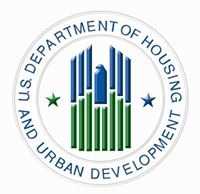Model programs in Colorado, Vermont, Washington and New Jersey earn HUD Secretary’s Award
WASHINGTON – (RealEstateRama) — The U.S. Department of Housing and Urban Development(HUD) and the National Environmental Health Association (NEHA) today announced that four model programs around the nation are recipients of the HUD Secretary’s Award for Healthy Homes, an award recognizing excellence in making indoor environments healthier through healthy homes. For the third consecutive year, HUD and NEHA identified outstanding local programs that promote healthier housing through research, education or innovated practices.

HUD and NEHA selected the following programs:
- Denver Housing Authority’s South Lincoln Neighborhood Redevelopment Mariposa project;
- Vermont Weatherization’s One Touch Program;
- Tribal Healthy Homes Network’s Partnership for Air Matters in Alaska; and,
- Rutgers University, Bed Bug Monitoring Protocol and Model Integrated Pest Management Program.
The awards were presented today at NEHA’s 2017 Annual Educational Conference and Exhibition in Grand Rapids, Michigan.
HUD has a strong partnership with NEHA based on a common vision of creating healthier home environments by working across the health, environment, and housing sectors. The award was initiated in 2015 to showcase results achieved under a wide range of housing and indoor environmental health programs.
“The recipients of this award understand the strong connection between where we live and how healthy we are,” said HUD Secretary Dr. Ben Carson. “They demonstrate innovative approaches to making homes healthier, and exemplify the outstanding work that’s taking place throughout the nation.”
Nominations and applications were received from academic institutions, state government agencies, housing authorities, and community based organizations. A distinguished nine-judge panel, representing a cross-section of experts from the healthy homes community, evaluated entries. For more information about the award process and the panel, please visit NEHA’s website.
Among the key criteria for the awards are measurability, health impact on population, policy/program innovation, impact on physical environment, economic sustainability, and partnership/collaboration.
The awardees are:
Denver Housing Authority (Denver, CO)
The Denver Housing Authority and partners designed the South Lincoln Neighborhood Redevelopment Mariposa project that revitalized 270 public housing units/South Lincoln homes, transforming it from an area of concentrated poverty near downtown Denver into a vibrant, healthy, mixed-income community. This effort included increasing access to health care and public transit, and developing a resource efficient, desirable, and safe neighborhood. The design also achieved multiple health related objectives, such as reducing noise, increasing physical activity, and reinforcing a social support network. A Health Impact Assessment was used to assess the impacts of policies, redevelopment projects and programs on population health, and in the overall building and design process.
Vermont Weatherization One Touch Program (Vermont)
Vermont Weatherization One Touch works with weatherization/energy, healthy, and housing home visiting and repair programs to increase family access to health and energy efficiency services. Since its inception in 2014, over 1,300 families have received a One Touch checkup. The program is the first in the nation to incorporate healthy homes assessments into all state supported weatherization projects in single family homes and provide residents with a seamless referral to address their other healthy or housing needs. Government and non-profits partners that “touch” homes use a common home checkup and referral system to make sure their clients get the health, housing, and energy services they need from the 20 One Touch partner programs. One Touch checkups are completed during every single-family weatherization project, lead hazard repair jobs, and selected housing rehab projects that target low-income families.
Tribal Healthy Homes Network (Washington)
The Tribal Healthy Homes Network (THHN) is a tribal consortium formed in 2008 to address the grave concerns about rising rates of asthma in native communities. Mold contamination was a widespread problem and a likely factor in the asthma epidemic among American Indians and Alaska Natives. In 2014, THHN began looking for innovations to reach the thousands of tribal families living with poor indoor air quality (IAQ), recurrent lung infections and hospitalizations. The tribes trained by THHN were consistently asking, “I may understand IAQ better now, but how do I get members of my community to understand?”
THHN collaborated with an international health organization to develop a Healthy Homes Toolkit. The toolkit bundles key IAQ tools, reflecting input and from 28 Alaska Native Communities to encourage realistic use in households, as well as from agencies and technical experts. The toolkits were rapidly adopted or emulated by local and state health programs, and others nationwide. Since 2014, over 500 Healthy Homes Toolkits have been distributed to rural communities; weatherization programs; Women, Infants and Children (WIC) clients; and many other groups.
Rutgers University (New Brunswick, NJ)
Bed bug infestations have both significant medical and economic impacts. Bed bug bites cause pain, itchiness, loss of sleep, and psychological distress. The cost of controlling bed bug infestations is a serious financial burden in low-income communities. In addition, cockroaches contaminate food and produce allergens that are asthma triggers.
Among HUD’s priority research areas is “Assessing or improving the efficiency of current methods for residential Integrated Pest Management (IPM).” Under the leadership of Dr. Changlu Wang, the Urban Entomology lab at Rutgers University cooperated with low-income communities, manufacturers, and other universities in developing and improving the adoption of more effective IPM programs.
In 2013, the team was awarded a HUD grant titled “Implementation and Evaluation of a Model Bed Bug Management Program in Low-Income Housing.” This study, which ended in 2016, partnered with three housing authorities in New Jersey with a total of over 2,000 apartments. It designed and implemented a low-cost, and highly effective bed bug monitoring protocol and a model IPM program. This protocol was published in a peer-reviewed journal (Wang et al. 2016).
Next year’s awards will be presented at the NEHA conference, June 25-28, 2018, at the Marriott Anaheim Hotel in Anaheim, California. For more information about OLHCHH and our resources, please visit www.hud.gov/healthyhomes.
###
HUD’s mission is to create strong, sustainable, inclusive communities and quality affordable homes for all.
More information about HUD and its programs is available on the Internet
at www.hud.gov and http://espanol.hud.gov.
You can also connect with HUD on social media and follow Secretary Carson on Twitter and Facebook or sign up for news alerts on HUD’s Email List.
HUD Public Affairs
(202) 708-0685








